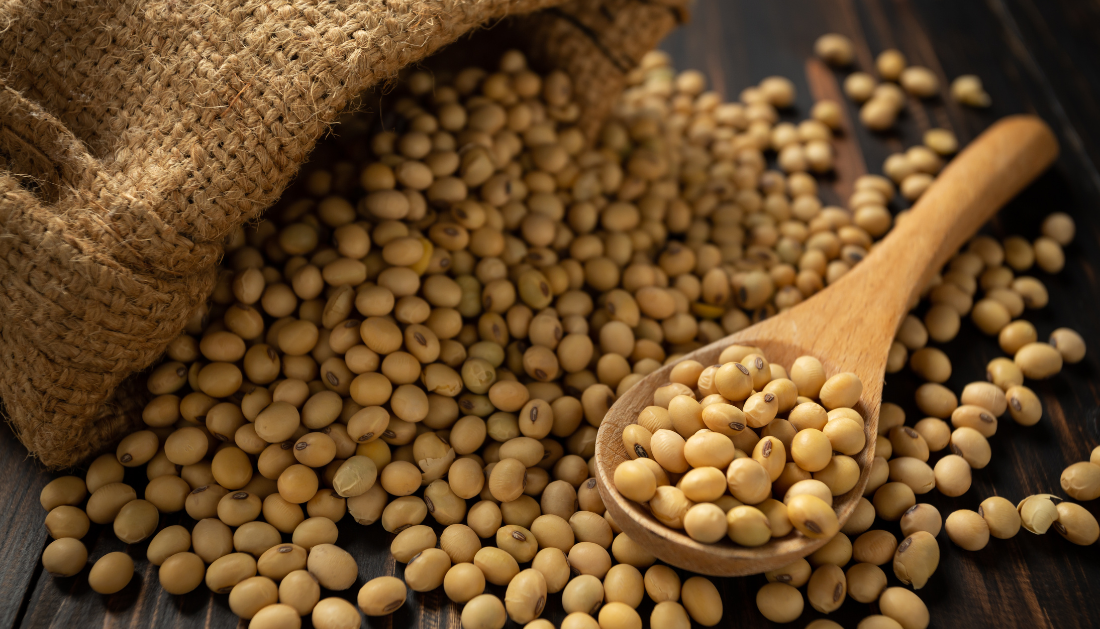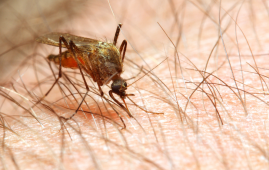

According to a new meta-analysis co-directed by Johns Hopkins Kimmel Cancer Center investigators, soy compounds known as isoflavones are among the plant-derived compounds that may considerably reduce the risk of breast cancer recurrence or mortality. The findings were published in the journal JNCI Cancer Spectrum on January 10th.
Researchers from Australia, Denmark, England, Norway, and the United States examined the impact of dietary intake of soybeans, lignans (compounds found in a variety of plants including seeds and nuts), cruciferous/cabbage-family vegetables, and green tea — and the phytonutrients (natural compounds derived from plants) in these substances — on breast cancer recurrence and mortality, as well as mortality from all causes. This includes 11 studies on soy isoflavones, three studies on cruciferous vegetables, two studies on green tea, three studies on lignans, and three studies on enterolactone, which is generated in the stomach when lignans are digested.
According to a meta-analysis that included six of the trials (of 11,837 women) assessed by investigators, soy isoflavones were related with a 26% lower risk of breast cancer recurrence. The findings were more striking among postmenopausal survivors. At 60 milligrams per day, the biggest risk reduction was observed. This translates to two to three servings per day, with one serving equaling a cup of soy milk, three ounces of tofu, or half a cup of cooked soybeans. The effect of soy consumption on risk of mortality, on the other hand, was less (12%) and not statistically significant, and was noticed largely at 20-40 mg per day, or one to two servings.
Another discovery, revealed for the first time in a meta-analysis, concerns enterolactone, a lignan-metabolized molecule. Lignans are found in many plants, including seeds, nuts, legumes, whole grains, fruit, and vegetables. Flaxseeds, cashew nuts, broccoli, and Brussels sprouts, among other foods, have high levels. Enterolactone was found to reduce the risk of breast cancer-specific mortality by 28% and overall death by 31%, especially in postmenopausal women (35% reduction in overall death). Because the gut microbiota, which plays a role in lignan metabolism, varies between individuals, it is not possible to compute the effective dose of lignans in the diet based on these enterolactone data.
“These findings were graded probable, which means there is strong research showing that they contributed to the results we are seeing,” explains main study author Diana van Die, Ph.D., of Western Sydney University’s NICM Health evidence Institute.
The review also discovered several suggestive results, implying that the findings are frequently consistent but rarely robust enough to warrant recommendations:
• Green tea consumption appears to reduce the incidence of breast cancer recurrence by 44% in women with stage I or II breast cancer. According to two Japanese research, ingesting three to five cups per day and five or more cups per day had the highest benefit.
• In postmenopausal women who took lignans before to breast cancer diagnosis, there was a non-significant 34% risk reduction in cancer-specific mortality and a 19% risk reduction in all causes of death. Consumption of lignans by premenopausal women, on the other hand, shows an increased risk of mortality. This finding suggests that the effects of lignans are affected by the hormonal environment, however it was likely influenced by a single big trial and warrants additional exploration. In the trials analyzed, the highest intake was nine or more servings per day.
• The impact of cruciferous vegetables was equivocal, presumably due to the studies’ average intake being quite modest (less than a half-cup per day).
The researchers also investigated whether eating soy, lignans, cruciferous vegetables, and green tea, or their phytonutrients, before or after a breast cancer diagnosis made a difference. The statistics, however, did not provide a definitive explanation. Green tea and lignans intake was measured in all studies before diagnosis, whereas soy intake was measured in studies before and after diagnosis.
“It’s critical to emphasize that these studies were conducted on women who received medical and/or surgical treatment for breast cancer, and that these foods and phytonutrients should not be considered as treatment alternatives,” says senior study author Channing Paller, M.D., director of prostate cancer clinical research and associate professor of oncology at Johns Hopkins.
“This study emphasizes the need for more robust studies in this area to determine the most effective dosages of these compounds, as well as whether starting to consume them after diagnosis has the same effect as a lifelong dietary habit prior to diagnosis.” “This is what patients want,” Paller remarked.
for more information: Phytonutrients and outcomes following breast cancer: a systematic review and meta-analysis of observational studies , Journal JNCI, https://doi.org/10.1093/jncics/pkad104
more recommended stories
 Sterilized Fermented Beverage for Obesity: New Evidence
Sterilized Fermented Beverage for Obesity: New EvidenceEarly Insights Into a Sterilized Fermented.
 36-Week Pre-eclampsia Screening May Reduce Term Risk
36-Week Pre-eclampsia Screening May Reduce Term RiskA New Preventive Strategy for Term.
 Cardiovascular Risk and Sudden Cardiac Death in Diabetes
Cardiovascular Risk and Sudden Cardiac Death in DiabetesRising Sudden Cardiac Death (SCD) Risk.
 Poor Kidney Function and Alzheimer’s Biomarkers Explained
Poor Kidney Function and Alzheimer’s Biomarkers ExplainedPoor kidney function may influence levels.
 Perinatal Mental Health Challenges Highlighted in New Study
Perinatal Mental Health Challenges Highlighted in New StudyMental Health Challenges in New Parents:.
 Walking Speed Before Hip Replacement Predicts Recovery
Walking Speed Before Hip Replacement Predicts RecoveryNew Evidence Points to a Simple,.
 Neuroblastoma Drug Combo Extends Survival in Models
Neuroblastoma Drug Combo Extends Survival in ModelsA Promising Shift in High-Risk Neuroblastoma.
 How Soybean Oil Impacts Weight Gain and Metabolism
How Soybean Oil Impacts Weight Gain and MetabolismWhy Soybean Oil May Affect Metabolism.
 New Malaria Prevention Insights From African Biostatistics
New Malaria Prevention Insights From African BiostatisticsHow New Data Is Reframing Malaria.
 Coffee and Cognitive Function: Evidence Review
Coffee and Cognitive Function: Evidence ReviewA new narrative review in Cureus.

Leave a Comment